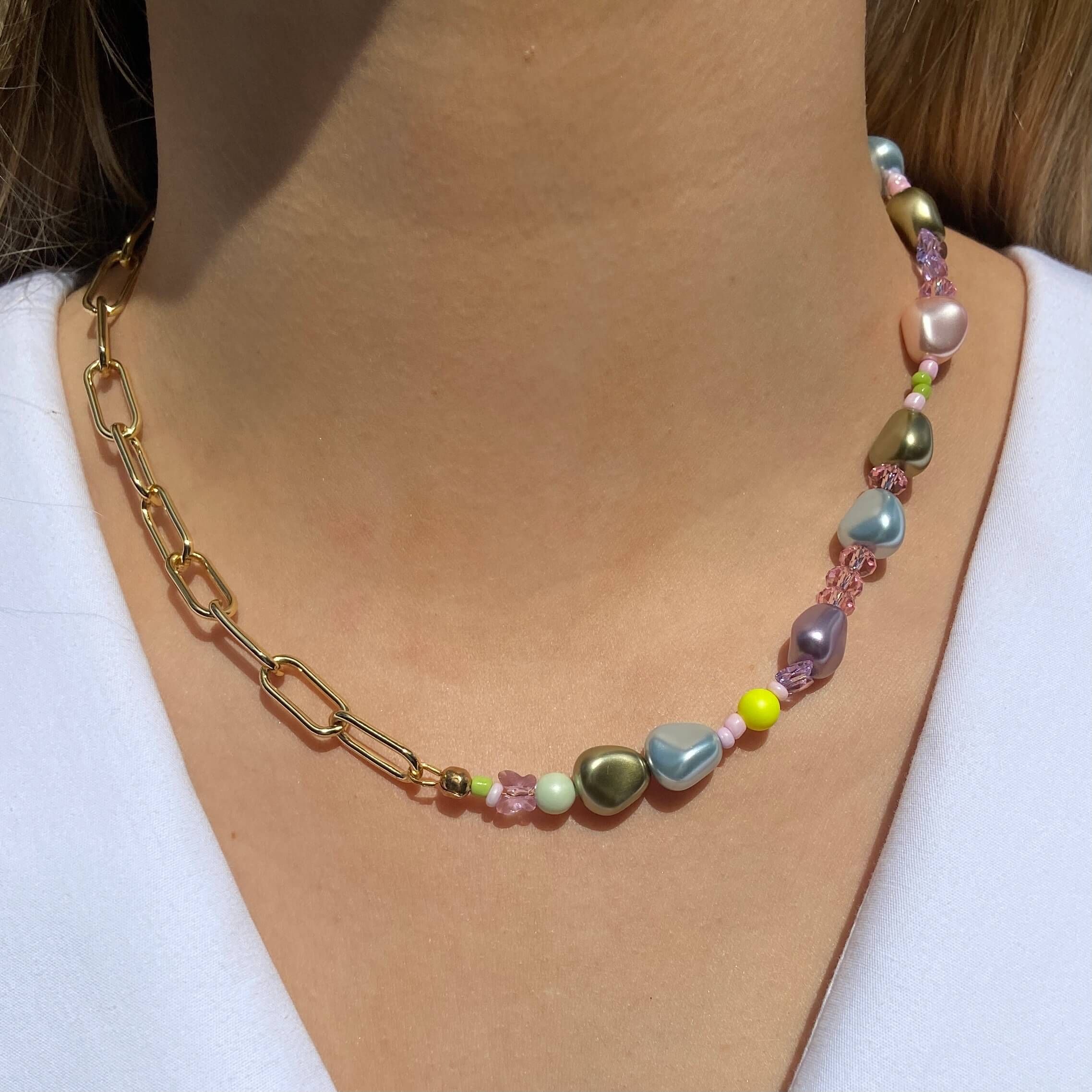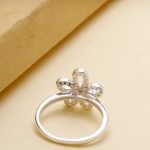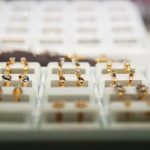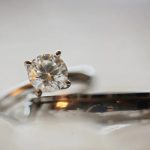Are you a creative individual who loves crafting and designing unique pieces of jewelry? If so, then learning how to make beaded jewelry to sell can be a highly lucrative venture for you. Beaded jewelry is not only a timeless and beautiful accessory, but it also allows for endless creativity and personal expression. With the right skills, supplies, and marketing strategies, you can turn your passion for creating beaded jewelry into a profitable business.
The art of making beaded jewelry has been around for centuries, with cultures all over the world using beads as adornments and symbols of status. However, in recent years, there has been a resurgence in the popularity of handmade jewelry due to its personalized touch and unique designs. Many people are now seeking out one-of-a-kind pieces that cannot be found in mass-produced stores.
In this article, we will guide you through the process of making beaded jewelry to sell. From selecting the perfect beads to mastering basic techniques such as bead stringing and wirework, we will provide you with step-by-step instructions and valuable tips on creating eye-catching designs.
Additionally, we will explore pricing and packaging strategies that will help maximize your profit while attracting customers. Finally, we will delve into effective marketing techniques so that you can successfully promote and sell your creations.
If you have always dreamed of turning your love for crafting into a profitable business venture, then learning how to make beaded jewelry to sell is an excellent first step. So grab your tools, gather some supplies, and let’s embark on this exciting journey together where creativity meets entrepreneurship.
Getting Started
Getting started in the world of making beaded jewelry to sell requires having the essential supplies and tools at hand. These items are not only necessary for creating beautiful pieces but also for ensuring efficiency and precision in your work. With the right equipment, you can start your jewelry-making journey on the right foot.
One of the most important supplies you’ll need is a variety of beads. It’s advisable to have beads in different shapes, sizes, and materials to cater to a wide range of customer preferences. Some commonly used bead materials include glass, crystal, gemstones, ceramic, metal, and wood. Experimenting with different types of beads will allow you to explore various design aesthetics and cater to diverse markets.
In addition to beads, you’ll need beading wire or thread as a foundation for your jewelry pieces. Beading wire comes in different thicknesses or gauges, so choose one that suits your project’s requirements. Alongside beading wire, you’ll also need an array of findings such as clasps, jump rings, earring hooks, and crimp beads to finish off your designs professionally.
Apart from supplies, investing in quality tools is crucial for creating beaded jewelry effectively and efficiently. Some essential tools include round-nose pliers for bending wire into loops or coils; flat-nose pliers for gripping and bending wire; wire cutters for trimming excess wire; and crimping pliers for securing crimp beads onto wires or threads. Additionally, having a bead board or mat with measurements will help with arranging and designing your pieces accurately.
By gathering these essential supplies and tools before diving into making beaded jewelry to sell, you’ll equip yourself with everything needed to create stunning pieces efficiently while setting yourself up for success in this craft business venture.
Selecting the Perfect Beads
When it comes to making beaded jewelry to sell, selecting the perfect beads is a crucial step in creating marketable pieces. The type, color, and material of the beads you use can greatly impact the overall appeal and success of your jewelry. Here are some key considerations to keep in mind when selecting beads for your designs.
Firstly, consider the types of beads that are popular in the market. This can vary depending on current fashion trends and consumer preferences. For example, gemstone beads such as amethyst, jade, and turquoise are often sought after for their natural beauty and unique qualities. Glass beads are also highly versatile and come in a wide range of colors and finishes.
Next, pay attention to the colors of your beads. The color palette you choose should align with your target audience’s preferences as well as the style and theme of your jewelry. Consider using colors that are currently trending or those that complement different skin tones. It’s also important to offer a variety of colors to cater to different customer preferences.
In addition to types and colors, the material of the beads is another important aspect to consider. Some popular materials include glass, crystal, ceramic, metal alloy, wood, shell, and plastic. Each material has its own unique characteristics that can add visual interest to your designs. Experiment with different materials to create diverse collections that cater to various tastes.
| Bead Type | Key Features |
|---|---|
| Gemstone Beads | Natural beauty; unique patterns and colors |
| Glass Beads | Wide range of colors and finishes; versatility |
| Crystal Beads | Elegant sparkle; light reflection |
| Ceramic Beads | Handmade charm; variety of shapes and textures |
| Metal Alloy Beads | Durable; metallic shine and texture |
By taking into consideration the types, colors, and materials of the beads you choose, you can create marketable jewelry pieces that appeal to your target audience. Remember to stay updated on current trends and continuously experiment with different combinations to keep your designs fresh and unique.
Designing Captivating Jewelry Pieces
When it comes to making beaded jewelry to sell, creating eye-catching and unique designs is essential to stand out in a competitive market. Here are some tips to help you design captivating jewelry pieces that will catch the attention of customers:
- Consider the target audience: Before designing your jewelry pieces, it’s important to consider who your target audience is. Are you creating jewelry for young girls, working professionals, or bohemian style enthusiasts? Understanding your target audience will help you tailor your designs to their preferences and create pieces that they will find appealing.
- Experiment with color combinations: The choice of colors can make a significant impact on the overall appeal of your jewelry. Play around with different color combinations that complement each other and evoke certain emotions or moods. Consider using color theories such as complementary colors, analogous colors, or triadic colors to create visually striking designs.
- Incorporate different materials and textures: Adding variety in terms of materials and textures can make your designs more visually interesting and unique. Mix different types of beads like glass, gemstone, or wood beads to add depth and dimension to your creations. You can also experiment with incorporating other materials such as crystals, pearls, or even natural elements like shells or feathers.
- Pay attention to details: The devil is in the details when it comes to designing captivating jewelry pieces. Small embellishments like charms, pendants, or spacers can make a big difference in enhancing the overall design. Don’t forget about the clasp as well – choosing an interesting clasp can add that extra touch of uniqueness to your jewelry.
- Stay updated with trends but keep your own style: While it’s important to stay updated with current fashion trends, it’s equally important to maintain your own unique style as a jewelry designer. Find ways to incorporate popular trends into your designs while infusing your own personal touch. This will help your jewelry pieces to stand out and make a lasting impression on customers.
By following these tips, you’ll be able to design captivating jewelry pieces that are not only visually appealing but also unique and distinctive. Remember, creating eye-catching designs is an ongoing process, so don’t be afraid to experiment, take inspiration from different sources, and most importantly, let your creativity flow.
Mastering the Basic Techniques
Bead stringing, wirework, and knotting are essential techniques that every jewelry maker should master to create beautiful and durable beaded jewelry. In this section, we will provide step-by-step instructions for each of these techniques, ensuring that you have a solid foundation to create stunning pieces.
Bead Stringing
The first basic technique to master is bead stringing. This technique involves threading beads onto a string or cord to create a necklace, bracelet, or anklet. Here are the steps to bead stringing:
- Gather your supplies: You will need beads of your choice, beading thread or flexible beading wire, a clasp, jump rings (if using), and crimp beads (if using flexible beading wire).
- Cut the string or wire: Measure and cut the desired length for your piece of jewelry. Remember to consider the size of the beads and add extra length for attaching the clasp.
- Prepare the ends: If using beading thread, tie a knot at one end of the thread to secure it. If using flexible beading wire, attach a crimp bead and a jump ring at one end.
- Start stringing: Begin by threading your chosen beads onto the thread or wire in your desired pattern. You can use a beadboard or design tray to layout your design beforehand.
- Finishing touches: Once all your beads are strung, make sure they are evenly spaced. If using beading thread, tie another knot at the other end to secure it. If using flexible beading wire, feed it through another crimp bead and flatten it with pliers before attaching a jump ring and clasp.
Wirework
Wirework is another technique that adds versatility and creativity to your beaded jewelry designs. It involves manipulating wire to create loops, wraps, and other shapes. Here’s a step-by-step guide to get started with wirework:
- Gather your supplies: You will need jewelry wire (preferably in various gauges), wire cutters, round-nose pliers, chain-nose pliers, and any beads or findings you want to incorporate into your designs.
- Choose the right gauge of wire: Select the appropriate gauge of wire for your project. Thicker gauges offer more stability and strength, while thinner gauges allow for more intricate designs.
- Create loops and wraps: Use the round-nose pliers to create loops and bails by bending the wire around the tip of the pliers. You can also use chain-nose pliers to shape and wrap the wire around itself or other components.
- Incorporate beads: String beads onto your wire before or after shaping it into loops or wraps. You can create dangles or attach beads directly onto your wirework.
- Experiment with different techniques: Explore other wirework techniques such as making spirals, coiling, weaving, or creating decorative elements like filigree patterns.
Knotting
Knotting is a technique commonly used in creating beaded bracelets or necklaces with a professional finish. It helps keep the beads secure and prevents them from rubbing against each other. Follow these steps to master knotting:
- Gather your supplies: You will need silk thread or nylon cord (both are commonly used for knotting), needle (if using silk thread), scissors, tapestry needle (optional), beads, and a clasp.
- Cut the thread/cord: Measure and cut a length of thread/cord that is long enough to accommodate all your beads plus extra length for attaching the clasp.
- Anchor the thread/cord: If using silk thread, tie a knot at the end or pass it through the eye of a needle. If using nylon cord, tape one end to create an anchor point.
- Start threading: Begin by threading your chosen beads onto the thread/cord. Leave enough space between each bead to accommodate knots.
- Create a knot: After each bead is threaded, tie a simple overhand knot right after it to secure it in place. Ensure that the knot is tight but not too tight that it distorts the shape of the beads.
By mastering these basic techniques, you will have a solid foundation for creating beaded jewelry with professional finishes. Practice and experiment to expand your skills and develop your unique style as a beaded jewelry maker.
Adding Extra Charm
Choosing the Right Charms, Pendants, and Embellishments
When it comes to enhancing your beaded jewelry creations, incorporating charms, pendants, and embellishments can take your designs to the next level. However, it is crucial to choose the right ones that complement your overall aesthetic and style. Consider the theme or concept of your jewelry piece and select charms or pendants that align with it.
For example, if you are creating a nature-inspired necklace, consider using leaf-shaped charms or pendants with floral motifs. Experiment with different materials such as metal, resin, glass, or gemstones to add variety and depth to your designs.
Placement and Balance
Once you have chosen the charms or pendants for your beaded jewelry piece, it’s essential to pay attention to their placement and balance within the design. Think about where the focal point of your jewelry should be and place the charm or pendant accordingly. You can hang them in the center of a necklace or incorporate them as a centerpiece in a bracelet.
Remember to consider the weight of the charm or pendant, as it could affect how the jewelry hangs when worn. Additionally, ensure that the size of the charm or pendant is proportional to the rest of your beads so that they harmonize well together.
Embellishing Techniques
There are several ways you can incorporate charms, pendants, and embellishments into your beaded jewelry pieces creatively. One option is to attach them using jump rings or wire wrapping techniques. This allows for easy interchangeability if you want to change up your design later on. Another technique is sewing on embellishments such as sequins, seed beads, or crystals onto fabric-based jewelry like cuffs or earrings.
This adds texture and sparkle to your creations. Don’t be afraid to mix different techniques; for example, you can combine wirework with sewing on beads to create a unique and intricate design. Experiment with different methods to achieve your desired look.
By adding charms, pendants, and embellishments to your beaded jewelry, you can create pieces that are not only visually appealing but also tell a story or evoke certain emotions. Remember to choose them thoughtfully, consider their placement and balance within your design, and explore various embellishment techniques. These elements will enhance the overall charm and uniqueness of your jewelry, making them more desirable to potential customers.
Pricing and Packaging
When it comes to selling beaded jewelry, setting the right price is crucial to maximizing your profit. However, determining the perfect price point can be challenging. It’s important to find a balance between covering your costs and ensuring that customers are willing to pay for your creations. One strategy for pricing your beaded jewelry is to consider the materials used, the complexity of the design, and the time invested in crafting each piece.
Start by calculating the cost of materials, including beads, clasps, findings, and any other components used in your jewelry. Don’t forget to factor in the cost of tools and packaging as well. Once you have established the cost of materials, add a markup that reflects your time and skill as an artist. Consider how long it took to create each piece and what level of expertise was required.
Another pricing strategy is to research the market and see what similar pieces are selling for. Look at both online platforms like Etsy or eBay and local boutiques or craft fairs to get an idea of what customers are willing to pay. Keep in mind that you don’t want to underprice your items; charging too little can give potential buyers the impression that your jewelry is cheaply made.
In addition to pricing, attractive packaging can make a significant difference in how customers perceive your beaded jewelry. Invest in high-quality packaging materials such as small boxes, organza bags, or velvet pouches that reflect the style and aesthetic of your jewelry line.
Consider adding personalized touches like logo stickers or handwritten thank-you notes to create a memorable unboxing experience for your customers. Remember that packaging not only protects your jewelry but also serves as an advertisement for potential repeat sales or recommendations from satisfied customers.
By strategically pricing your beaded jewelry and investing in appealing packaging, you can enhance its perceived value and increase profitability while also providing a positive customer experience from start to finish.
Marketing and Selling Your Jewelry
Marketing and selling your beaded jewelry is an essential aspect of running a successful business. Without effective techniques for promoting, displaying, and making sales, your beautiful creations may go unnoticed. Here are some strategies to help you market and sell your beaded jewelry effectively:
Promoting Your Jewelry
- Utilize social media platforms: Create accounts on popular social media platforms such as Instagram, Facebook, and Pinterest to showcase your jewelry. Post high-quality images of your pieces regularly and engage with your audience through comments and messages.
- Collaborate with influencers: Reach out to influencers or bloggers in the fashion or jewelry niche and offer them free samples of your jewelry in exchange for a review or feature on their platforms. This can help increase brand visibility and attract potential customers.
- Attend craft fairs and markets: Participating in local craft fairs or markets allows you to connect with potential customers face-to-face while showcasing the unique qualities of your jewelry.
Displaying Your Jewelry
- Invest in attractive displays: Consider purchasing or creating visually appealing displays that highlight the beauty of each piece of jewelry. Use materials such as velvet, wood, or glass to create a professional look.
- Organize by theme or style: Categorize your jewelry collection based on themes or styles to make it easier for customers to find what they are looking for.
- Provide clear pricing information: Ensure that each piece is clearly labeled with its price so that customers can easily determine if it fits within their budget.
Making Sales
- Offer discounts or promotions: Entice potential buyers by offering limited-time discounts, buy-one-get-one offers, or free shipping on certain orders.
- Accept various payment methods: Make it convenient for customers to purchase your jewelry by accepting multiple payment options such as credit cards, PayPal, and mobile payment apps.
- Provide excellent customer service: Respond promptly to customer inquiries, address any concerns or complaints professionally and courteously, and provide helpful information about your jewelry.
By implementing these effective techniques for promoting, displaying, and making sales, you can increase the visibility of your beaded jewelry business and attract a larger customer base. Remember to adapt your marketing strategies based on current trends and customer preferences to stay ahead in the competitive market.
Expanding Your Business
Once you have successfully established your beaded jewelry business, the next step is to focus on growing and expanding your enterprise. Scaling up your business can lead to increased profits, wider reach, and more opportunities for success. Here are some strategies to help you expand your beaded jewelry business:
- Diversify Your Product Range: While maintaining your signature style and unique designs, consider introducing new types of jewelry into your collection. This could include bracelets, earrings, anklets, or even custom-made pieces. By diversifying your product range, you can attract a larger customer base with different preferences and increase the number of sales.
- Collaborate with Other Artists: Consider collaborating with other artists or designers who work in complementary mediums. For example, you could partner with a clothing designer to create matching accessories for their garments or collaborate with a ceramic artist to combine beads with pottery elements. These collaborations not only enhance the creativity and uniqueness of your jewelry but also open doors to new markets through cross-promotion.
- Explore Online Marketplaces: Take advantage of the vast reach and convenience offered by online platforms such as Etsy, Amazon Handmade, or social media platforms like Instagram and Facebook Marketplace. Create an online store or profile specifically for your beaded jewelry business where potential customers can browse and purchase your products from anywhere in the world.
- Attend Trade Shows and Craft Fairs: Participating in trade shows and craft fairs is an excellent way to showcase your beaded jewelry to a larger audience. Research local events that align with your target market and reserve a booth or table to display and sell your creations directly to customers. These events also provide networking opportunities where you can connect with other artisans, suppliers, and potential wholesale buyers.
- Seek Wholesale Opportunities: As you scale up your business, explore partnerships with retailers or boutiques interested in carrying your beaded jewelry. Offering your products at wholesale prices allows you to reach a larger customer base without the responsibility of direct sales. Develop a wholesale catalog and establish relationships with local retailers or online platforms specializing in handmade goods.
Expanding your beaded jewelry enterprise requires careful planning and strategic decision-making. By implementing these growth strategies, you can increase the visibility of your brand, attract new customers, and continue to thrive in the competitive market of handmade jewelry. Remember to stay true to your passion and creative vision as you continue to expand your business and make a name for yourself in the world of beaded jewelry.
Conclusion
As we come to the end of this guide, it is clear that making and selling beaded jewelry can be a rewarding and profitable venture for those with creativity and passion. By following the steps outlined in this article, you have gained an understanding of the essential supplies and tools needed, how to select the perfect beads, tips for designing captivating jewelry pieces, and mastering the basic techniques.
However, it is important to remember that success in this industry requires more than just skill. It requires an entrepreneurial spirit, perseverance, and a commitment to continuous learning. As you embark on your journey to make and sell beaded jewelry, embrace your creativity and passion wholeheartedly. Experiment with different designs, materials, and techniques to create unique pieces that stand out in the market.
Remember that pricing your jewelry appropriately will play a crucial role in maximizing profit. Take into consideration factors such as the cost of materials, time invested in creating each piece, and market demand. Additionally, invest time in creating attractive packaging that will entice customers and enhance the perceived value of your products.
In order to succeed in selling your beaded jewelry, effective marketing strategies are essential. Utilize social media platforms to showcase your designs and engage with potential customers. Participate in local craft fairs or set up booths at flea markets where you can interact directly with customers. Display your jewelry creatively to attract attention and provide a positive shopping experience.
Finally, as your business grows, consider expanding by offering customized options or collaborating with other artisans. Continuously seek feedback from customers to improve upon your designs and offerings. Most importantly, never lose sight of why you started this journey – because of your love for creating beautiful pieces of art that others can enjoy.
So don’t hesitate any longer – embrace your creativity and passion for making beaded jewelry as you embark on an exciting journey ahead. Have faith in yourself and let your imagination guide you as you turn beads into beautiful pieces that will be cherished by others. Good luck on your path to success.
Frequently Asked Questions
Is selling beaded jewelry profitable?
Selling beaded jewelry can be profitable depending on various factors. One crucial aspect is the quality and uniqueness of the jewelry. If the pieces are well-crafted, using high-quality beads and materials, customers may be willing to pay a higher price, increasing profitability.
Another factor is the demand for these types of jewelry. Researching market trends and ensuring there is a target audience interested in buying beaded jewelry can lead to increased sales and profits. Additionally, effective marketing strategies, such as establishing an online presence or participating in craft fairs, can help reach a wider customer base and boost profitability.
How profitable is bead making?
The profitability of bead making depends on several factors that influence the overall success of the business. Firstly, the cost of materials plays a significant role. If bead makers can find affordable sources for their beads, it increases profit margins significantly.
Additionally, efficiency in production processes is crucial as it directly affects the number of pieces that can be created within a given timeframe. This means finding methods to streamline production without compromising quality is important for maximizing profitability. Moreover, creating unique designs or catering to specific niche markets can also provide an advantage in terms of pricing power and increased demand.
Do beaded bracelets sell well?
Beaded bracelets have shown favorable sales records due to their popularity as fashionable accessories. However, success in selling beaded bracelets depends on several factors influencing consumer preferences and market trends at any given time. Variables such as design aesthetics, color schemes, quality craftsmanship, and price range play vital roles in attracting potential buyers.
Furthermore, understanding target customers’ preferences and adapting styles accordingly helps ensure competitive advantages over other sellers in a saturated market segment. Commencing market research and developing a strong promotional strategy are essential steps towards ensuring that beaded bracelets sell well and contribute to profitable returns on investment.

Welcome to my jewelry blog! My name is Sarah and I am the owner of this blog.
I love making jewelry and sharing my creations with others.
So whether you’re someone who loves wearing jewelry yourself or simply enjoys learning about it, be sure to check out my blog for insightful posts on everything related to this exciting topic!





